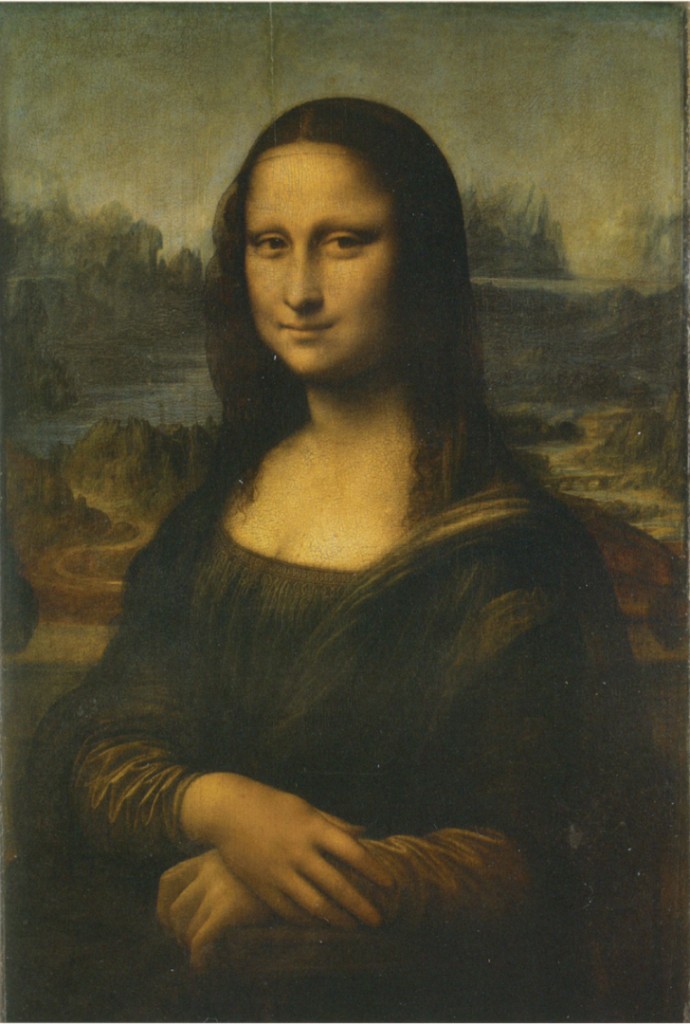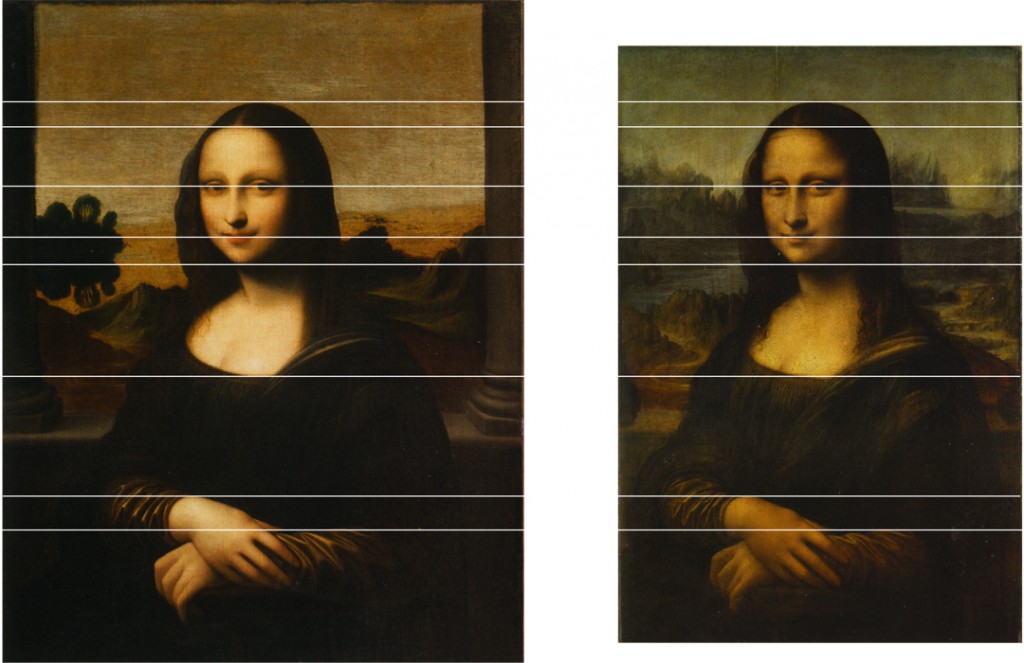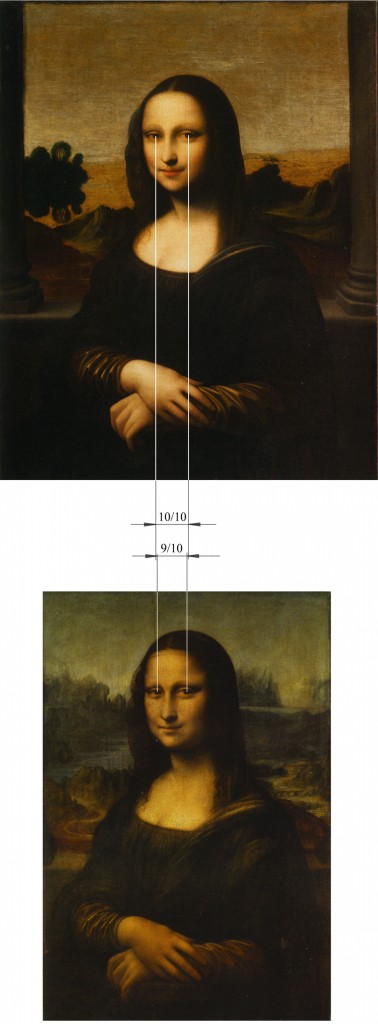A relationship has been established between the ‘Earlier Mona Lisa‘ and that of the Louvre through a discovery of the 21st century, the binocular perspective.
Albert Sauteur, painter artist and inventor of the binocular perspective, demonstrates by example why Leonardo da Vinci, who indeed practiced the aforementioned perspective without having identified it, may well be the author of the ‘Earlier Mona Lisa‘.
The Glass Wall
“Perspective is nothing else than the vision of a scene behind a flat and clear glass on which we mark all objects that are on the other side: they can be connected by pyramids to the center of the eye and these pyramids are intercepted by the glass.”
Leonardo da Vinci, circa 1480 – 1481
This text proves that at the time when Leonardo was involved in the development of perspectographies*, he painted using monocular perspective. As a mature artist, not only did he renounce this process with which he was not satisfied but condemned its use. This preamble is intended to define the difference in approach that Leonardo could have faced while painting the Mona Lisa, in a production of the same scene at two different periods.
Elements of perspective needed to understand this document
In monocular vision, the perceived space beyond the glass wall area is proportionally reproduced.
Reinvented Perspective (binocular)
In binocular vision, the perceived space beyond the glass wall area expands to suit the distance. This space is compressed horizontally in B’ so that it can be fully shown in the painting. This results in a deformation.
Comparison of the paintings

Earlier Mona Lisa, 64,5 cm x 86 cm
Louvre Mona Lisa, 53,3 cm x 79,2 cm
The format of the ‘Earlier Mona Lisa‘ is larger than that of the Mona Lisa in the Louvre: the painted surface is wider but the figure is smaller. Conversely, the Louvre’s Mona Lisa is smaller, but the figure is larger.
Horizontal Comparison of the models
The Louvre ‘Mona Lisa‘ is digitally reduced by 10% to allow for the comparison of models on the same scale, we see that the ladies are perfectly identical.
Vertical Comparison of the models
Comparing vertically both models, we find that the eyes of the Louvre ‘Mona Lisa‘ are closer together.
Effects of Binocular Perspective
Alerted by the difference in the spacing of the eyes* between both paintings, Albert Sauteur hypothesized that Leonardo would have painted the Louvre version in binocular vision, given that the eyes are closer together.
If we superimpose the Louvre ‘Mona Lisa‘ (Fig.1) and the earlier Mona Lisa (Fig.2) we can see that the bases of the columns (highlighted by a white line) do not appear in the red frame that matches the Louvre Mona Lisa.
In monocular vision we have a closer view of the horizontal visual field.
If we compress (in gray) the image of the ‘Earlier Mona Lisa‘ until her eye spacing matches that of the Louvre Mona Lisa, in addition to an increase in similarity, we find that the bases of the columns appear in the painting like the Louvre ‘Mona Lisa‘ with startling accuracy (Figure 3).
We must believe that the refinements that created such a situation can only be the prerogative of a genius like Leonardo da Vinci.
*In order to explain the binocular perspective, Albert Sauteur made an animated self-portrait whose theme is precisely the spacing of the eyes.





